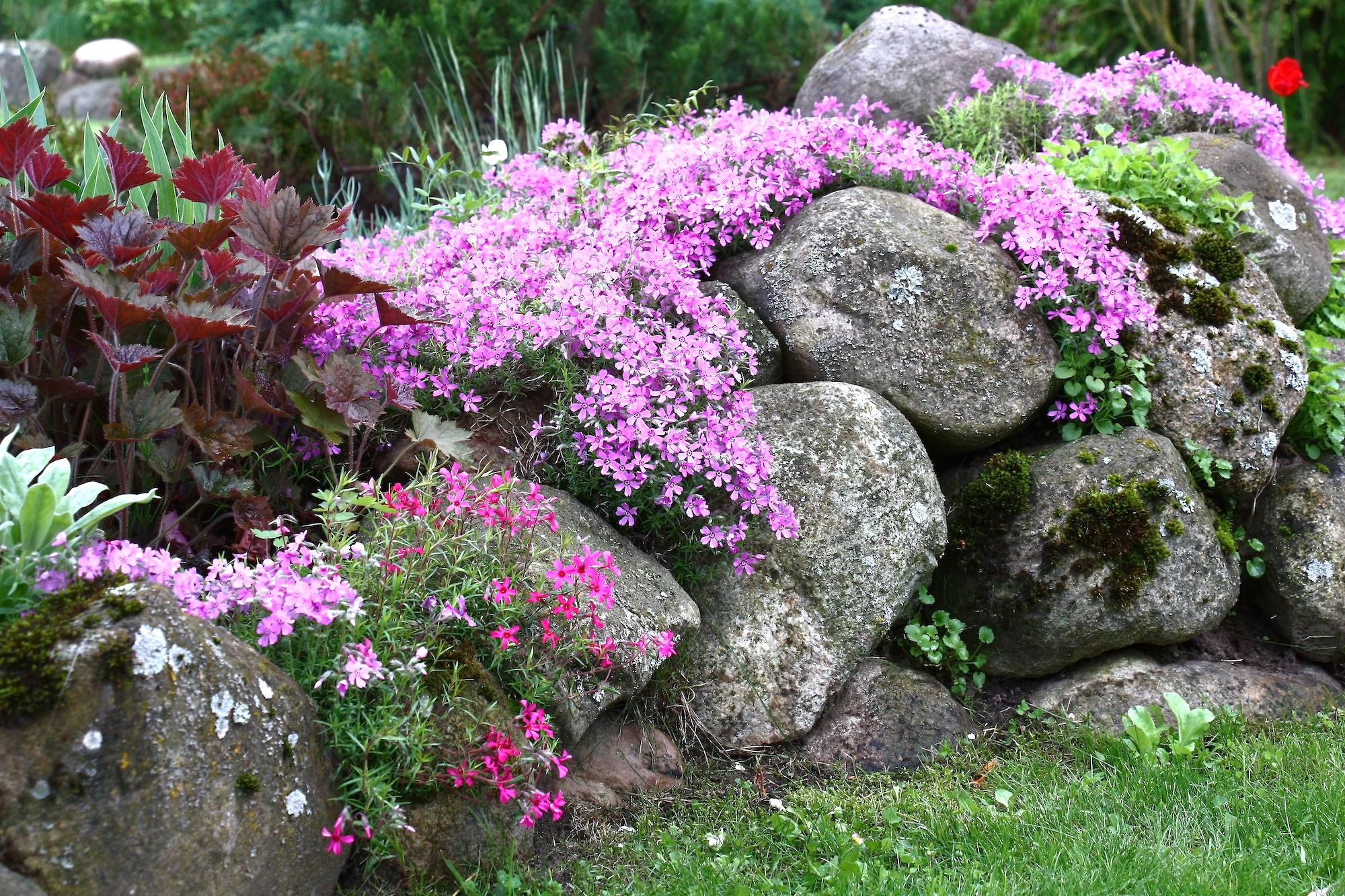Plants drink their food, so if your soil dries out, your plants will starve—or wilt. Here are 20 drought-tolerant flowers and plants to grow plus 10 tips to avoid disappointment in drought or dry conditions.
10 Tips for a Drought-Tolerant Garden
1. Improve the Soil
To help retain moisture, mix lots of compost into the soil at planting time, especially around your plants. Rainwater sluices through pure sand at the rate of 20 inches per hour or even faster, taking with it everything plants need to survive. Soil with lots of organic matter slows the transition of water from the soil to the subsoil, giving plants a chance to take in what they need.
2. Plan a Smaller Garden
If you’re growing a food garden, take stock of what you really need to grow and don’t exceed your calculations. For example, two or three hills of zucchini and cucumbers will easily meet the needs of a family of four.

Image: Drought-resistant phlox. Credit: imamchits/Shutterstock
3. Choose Drought-Tolerant Plants
If you live in a dry area or experience regular drought, avoid “thirsty” plants that need more water (example: bigleaf hydrangeas). Look for drought-tolerant plants. Plants with long taproots, such as butterfly weed, need very little water. Here is a sampling of 20 drought-tolerant plants.
- Allium
- Asclepias tuberosa (Butterfly Weed)
- Buddleja (Butterfly Bush)
- Cleome hassleriana (Spider Flower)
- Coneflower (Echinacea)
- Euphorbia marginata (Snow-on-the-Mountain)
- Iris (Bearded iris)
- Lantana
- Lavender
- Liatris spicata (Blazing Star)
- Liriope
- Pennisetum alopecuroides (Fountaingrass)
- Perovskia atriplicifolia (Russian sage)
- Phlox subulata (Creeping phlox)
- Rosemary
- Rudbeckia hirta (Black-eyed Susan)
- Salvia
- Sedum (Stonecrop)
- Thyme
- Verbena
Minimize container plantings in drought-prone areas. These dry out quickly and require much more water than plants growing in the ground. If you do keep containers, consider putting drought-tolerant native plants in your pots.
4. Choose Bush Varieties, Plant Close Together
For vegetable gardens, choose crops that grow low to the soil, which will lose less water through transpiration than those that spread rampantly (Hubbard squash) or twine up to the sky (pole beans). Check descriptions in seed catalogs for varieties that need little space and can tolerate dry conditions.
Leaves from neighboring plants will shade the soil, helping to conserve surface moisture and reduce weed growth. For example, plant beans about an inch apart and tomatoes about 18 inches apart.
5. Mulch Well
Mulch prevents moisture from evaporating directly from the soil surface, and it can greatly reduce weeds. Apply a 2- to 3-inch layer of organic mulch around plants when the soil is wet. Organic material such as bark or shredded leaves are best, but use whatever you have at hand such as newspaper, black plastic, old carpet, and/or large, flat stones. Read more about using mulch.
6. Weed Diligently
Smother weeds or pull them out—roots and all. Don’t make your plants compete with weeds for moisture and nutrients, especially in drought-prone areas.
7. Reduce Evaporation
Water your garden early in the morning—times when the least amount of water will evaporate from the leaves and soil. Evenings are cool, too, if you can’t do mornings; however, water sitting on leaves overnight can lead to fungal diseases.
To encourage roots to develop, soak the garden thoroughly rather than watering it lightly several times. It’s always better to water deeply and less often; frequent, shallow watering leads to weak, shallow-rooted plants. Deep watering encourages roots to grow deeper, where the soil stays moist longer.
8. Use a Drip Irrigation System
Drip irrigation provides greater water savings than sprinklers. (Consult your county extension agent for tips on setting up drip irrigation.) If you install a drip system, allow for different beds or separate parts of the garden to be on separate sets of commands. The water needs of plants differ widely, and a system that delivers one rate of water to your entire plot can be wasteful.
Whatever you do, do NOT just spray water into the air. Use a watering cans or soaker hoses and water the soil (down to the roots), not the air and leaves. Consider connecting your downspouts to rain barrels to collect water for irrigation.
9. Strip Off Leaves, Harvest at Once
Large, bushy tomato plants lose a lot of water through their leaves. Once the green tomatoes reach their full size, strip off some of the leaves to reduce evaporation and keep water going to the ripening fruit.
As soon as a fruit or vegetable is ripe, remove it from the plant. Pull up any plants that aren’t productive or that are past their prime.
10. Change Your Lawn Habits
Consider shrinking the size of your “thirsty” lawn. Replace sections (or as much as you can) with a native wildflower meadow or a rock garden. It will save you water and money. Plus, native plants don’t need much water nor TLC and they provide food for wildlife.
If you have a lawn, cut back on watering in summer. Most turfgrasses are adapted to summer drought and will send water reserves down to the roots. Don’t worry if the lawn turns “brown” at the end of the summer as it will green up again when temperatures cool.
Cut back on the mowing. Raise the height of your mower, because taller grass shades the soil, reducing water loss. Mow during the coolest part of the day, and leave the clippings on the ground.
Learn More
